UPSC Daily Current Affairs- 28th February 2024 | Current Affairs & Hindu Analysis: Daily, Weekly & Monthly PDF Download
GS-II
Lokpal
Subject: Polity
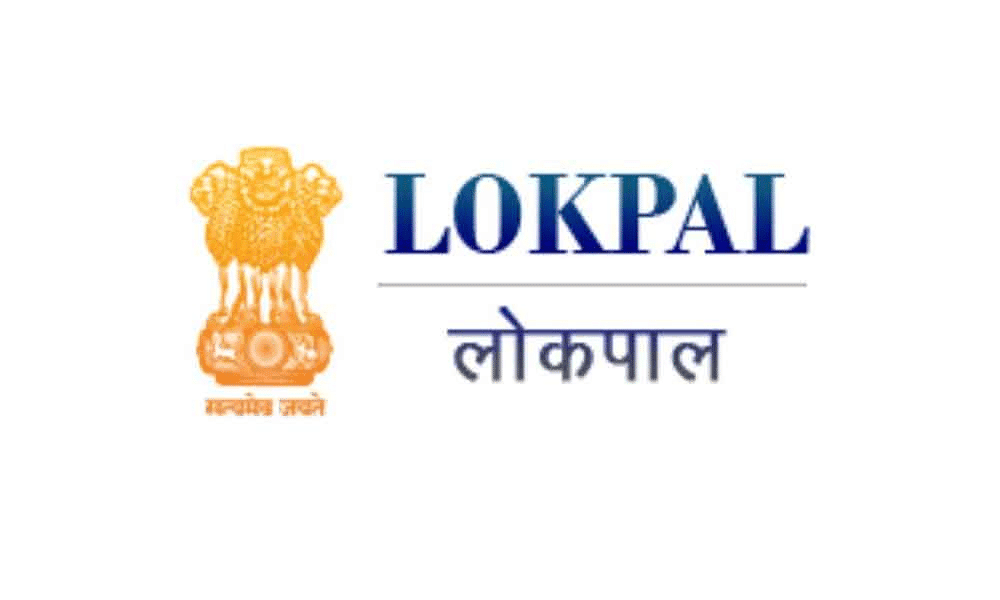
Why in News?
President Murmu appoints ex-SC judge Justice AM Khanwilkar as Chairperson of Lokpal
Background:
- The Lokpal and Lokayukta Act, 2013 provided for the establishment of Lokpal for the Union and Lokayukta for States.These institutions are statutory bodies without any constitutional status.The apex Institution was created to inquire and investigate complaints relating to allegation of corruption involving public functionaries and elected representatives.
About Lokpal:
- The Lokpal is the first institution of its kind in independent India,established under the Lokpal and Lokayuktas Act 2013 to inquire and investigate into allegations of corruption against public functionaries who fall within the scope and ambit of the above Act.
- The Lokpal has jurisdiction to inquire into allegations of corruption against anyone who is or has been Prime Minister, or a Minister in the Union government, or a Member of Parliament, as well as officials of the Union Government under Groups A, B, C and D. Also covered are chairpersons members, officers and directors of any board, corporation, society, trust or autonomous body either established by an Act of Parliament or wholly or partly funded by the Union or State government. It also covers any society or trust or body that receives foreign contribution above ₹10 lakh (approx. US$ 14,300/- as of 2019).
- A complaint under the Lokpal Act should be in the prescribed form and must pertain to an offence under the Prevention of Corruption Act, 1988 against a public servant.
- There is no restriction on who can make such a complaint. When a complaint is received, the Lokpal may order a preliminary inquiry by its Inquiry Wing or any other agency, or refer it for investigation by any agency, including the CBI, if there is a prima facie case.
- The Inquiry Wing or any other agency will have to complete its preliminary inquiry and submit a report to the Lokpal within 60 days.
- A Lokpal Bench shall consider the preliminary inquiry report, and after giving an opportunity to the public servant accused of corruption for his/her defence, decide whether it should proceed with the investigation. It can order a full investigation, or direct to start departmental proceedings or close the proceedings. It may also proceed against the complainant if the allegation is false.
- Lokpal will have power of superintendence and direction over any central investigation agency including CBI for cases referred to them by the Lokpal.
- The Chairperson and the Members are appointed by the President of India by warrant under his hand and seal and hold office for a term of five years from the date on which they enter upon the office or until they attain the age of 70 years, whichever is earlier.
- The chairperson and members of the Lokpal are appointed by the President after obtaining the recommendations of a Selection Committee comprising prime minister, speaker of low Sabha, leader of opposition in lok Sabha, Chief Justice of India or a Judge nominated by him/her and one eminent jurist.
- Apart from a chairperson, the Lokpal can have eight members — four judicial and as many non-judicial.
Source: Lokpal
CSTO
Subject: Polity
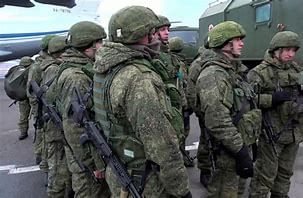
Why in News?
Recently, Kazakhstan’s President called on the Collective Security Treaty Organization (CSTO) to assist in managing ongoing protests within the country.
Background:
- These protests posed a threat to the very existence of the regime that has governed Kazakhstan since it became an independent republic in 1991
About Collective Security Treaty Organization (CSTO):
- The Collective Security Treaty Organization (CSTO) is an intergovernmental military alliance in Eurasia.
- It consists of six post-Soviet states: Armenia, Belarus, Kazakhstan, Kyrgyzstan, Russia, and Tajikistan.
- The CSTO was formed in 2002 and its origins can be traced back to the Soviet Armed Force.
- The CSTO’s headquarters is located in the Russian capital of Moscow.
Key aspects of the CSTO include:
- Collective Defence: Similar to Article 5 of the North Atlantic Treaty, Article 4 of the Collective Security Treaty establishes that an aggression against one signatory would be perceived as an aggression against all.
- Peacekeeping Force: The CSTO maintains a peacekeeping force that has been deployed to areas of conflict, including Tajikistan and Kyrgyzstan. The force is composed of troops from member states and is designed to provide stability and security in the region.
- Military Exercises: The CSTO holds yearly military command exercises for the CSTO nations to improve inter-organizational cooperation.
- Membership Restrictions: Signatories are prohibited from joining other military alliances.
- Operational Procedures: The CSTO employs a “rotating presidency” system in which the country leading the CSTO alternates every year.
Source: Indian Express
General Diary (GD)
Subject: Polity and Governance

Why in News?
The Supreme Court recently held that the information disclosing the commission of the cognizable offence needs to be recorded as a First Information Report ("FIR") in the form of a book and not in the General Diary maintained by the Police under the Police Act, 1861.
About General Diary (GD):
- General Diary, also called Station Diary or Daily Diary in some States, is maintained under the provisions of Section 44 of the Police Act, 1861, in the States to which it applies, or under the respective provisions of the Police Act(s) applicable to a State or under the Police Manual of a State, as the case may be.
- Section 44 of the Police Act, 1861 states that it shall be the duty of every officer in charge of a police station to keep a general diary in such form as shall, from time to time, be prescribed by the State Government and to record therein all complaints and charges preferred, the names of all persons arrested, the names of the complainants, the offences charged against them, the weapons or property that shall have been taken from their possession or otherwise, and the names of the witnesses who shall have been examined.
- It is a record of all important transactions/events taking place in a police station, including the departure and arrival of police staff, the handing over or taking over of charges, the arrest of a person, details of law-and-order duties, the visit of senior officers, etc.
- Additionally, the GD summarizes each First Information Report (FIR) registered at the police station, as FIR registration is a significant event there.
- Simultaneously, the GD entry reference is noted in the FIR Book, while the FIR number is mentioned in the GD entry. This parallel documentation ensures that both records are kept up to date.
- The GD is maintained in chronological order, with a new entry starting with number 1 each day.
What is a First Information Report (FIR)?
- It is a written document prepared by a Police officer based on information given by an aggrieved person or any other person, either in writing or made orally, about the commission of a Cognizable Offence.
- The investigation is started only after the filing of the FIR.
- Who can lodge an FIR?
- Anyone who knows about the commission of a cognizable offence can file an FIR. It is not necessary that only the victim of the crime should file an FIR.
- A police officer who comes to know about a cognizable offence can file an FIR himself/herself.
- An FIR can only be lodged in cases of cognizable offences.
General Diary (GD) vs. First Information Report (FIR):
- A copy of each FIR is sent to the superior officers and to the concerned Judicial Magistrate.
- A copy of GD is not sent to the Judicial Magistrate, though its copy is sent to a superior police officer.
- The Magistrate of the district shall be at liberty to call for any inspection of such GD.
- The signature of the complainant is obtained in the FIR Book as and when the complaint is given to the police station. On the other hand, there is no such requirement to obtain the signature of the complainant in the general diary.
- The general diary is an internal police record, while in the case of F.I.R., a copy of these will be provided to the complainant.
Source: Live Law
International Astronomical Union (IAU)
Subject: International Relations
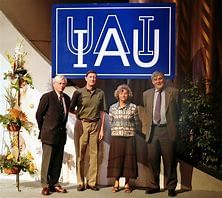
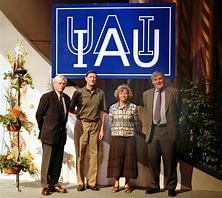
Why in News?
The International Astronomical Union recently confirmed the existence of three currently unnamed moons — one around Uranus and two orbiting Neptune.
About the International Astronomical Union (IAU):
- The IAU is a senior body governing international professional astronomical activities worldwide.
- It was established in 1919 as the first of a series of international unions for the advancement of specific branches of science.
- Its mission is to promote and safeguard the science of astronomy in all its aspects, including research, communication, education, and development, through international cooperation.
- The IAU is made up of various divisions, commissions, and working groups representing the various areas of astronomical research, teaching, and other endeavours.
- Membership:
- Its individual members are professional astronomers from all over the world, at the Ph.D. level and beyond, who are active in professional research, education, and outreach in astronomy.
- The IAU also has junior members.
- IAU membership spans 92 countries. Out of those countries, 85 are National Members.
- IAU activities range from the definition of fundamental astronomical and dynamical constants and unambiguous astronomical nomenclature, rapid dissemination of new discoveries, organization of international observing campaigns, and promotion of educational activities in astronomy to early informal discussions of possible future international large-scale facilities.
- It is the only organization recognized professionally for the naming of astronomical bodies, which it does solely on the basis of merit, history, or discoverer’s privilege.
- The IAU holds a general assembly every three years in varying parts of the world at which professional astronomers meet to discuss research, new cooperative ventures, and similar matters of professional interest.
- The IAU also works to promote research, education, and public outreach activities in astronomy for the public.
- Headquarters: Paris, France.
Source: Live Science
GS-III
Precision Farming
Subject: Economy
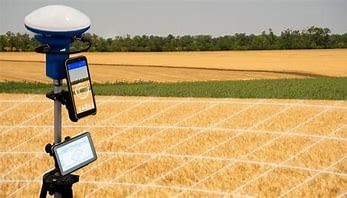
Why in News?
Garuda Aerospace highlights Precision Farming with Kisan Drone at Krishi Darshan Expo.
Background:
- Krishi Darshan Expo 2024 hosted by the Ministry of Agriculture and Farmers Welfare, served as a comprehensive platform for showcasing the latest agricultural technologies and innovations.
About Precision farming
- Precision farming, also known as precision agriculture (PA), is a farming management strategy that leverages information technology to enhance agricultural production sustainability.
- Precision farming involves observing, measuring, and responding to temporal and spatial variability within fields and livestock systems.
- The goal is to optimize returns on inputs while preserving resources.
How It Works?
- Instead of applying uniform inputs across the entire field, precision farming tailors’ interventions to specific areas based on their unique needs.
- Technologies such as GPS, GNSS, and sensor arrays enable precise data collection related to factors like crop yield, terrain features, organic matter content, moisture levels, and nutrient levels.
- Unmanned aerial vehicles (drones) equipped with cameras capture multispectral images, which aid in creating detailed maps for analysis.
Benefits:
- Increased crop yields and animal performance.
- Cost reduction, including labour costs.
- Optimized resource allocation
Examples:
- Varying fertilizer application based on soil nutrient levels.
- Adjusting irrigation based on moisture data.
- Mapping crop health using multispectral imagery.
- Monitoring livestock behaviour and health
Source: Krishi Jagran
European Union’s Carbon Border Adjustment Mechanism (Cbam)
Subject: Environment

Why in News?
According to a recent study by the Asian Development Bank (ADB), the European Union’s (EU) forthcoming Carbon Border Adjustment Mechanism (CBAM) is anticipated to yield only marginal reductions in global carbon emissions while modestly affecting trade flows, particularly in Asia and the Pacific.
Background:
- The European Union’s (EU) Carbon Border Adjustment Mechanism (CBAM) is a significant initiative aimed at addressing climate change on a global scale.
About CARBON BORDER ADJUSTMENT MECHANISM (CBAM)
- The European Union’s Carbon Border Adjustment Mechanism (CBAM) is a tool designed to put a fair price on the carbon emitted during the production of carbon-intensive goods that are entering the EU.
- It aims to encourage cleaner industrial production in non-EU countries by ensuring that the carbon price of imports is equivalent to the carbon price of domestic production.
- It aims to equalize the price of carbon between domestic and imported products in the affected sectors.
- The mechanism is designed to be compatible with WTO rules.
- CBAM will apply in its definitive regime from 2026, while the current transitional phase lasts between 2023 and 2026.
Definitive Regime (from 2026):
- EU importers of goods covered by CBAM will register with national authorities.
- They will buy CBAM certificates, with prices calculated based on the weekly average auction price of EU ETS allowances (expressed in €/tonne of CO₂ emitted).
- Importers will declare the emissions embedded in their imports and surrender the corresponding number of certificates annually.
- If importers can prove that a carbon price has already been paid during the production of the imported goods, the corresponding amount can be deducted.
Transitional Phase (2023 – 2026):
- CBAM initially applies to imports of certain goods and selected precursors with carbon-intensive production processes.
- These goods include cement, iron and steel, aluminium, fertilisers, electricity, and hydrogen.
- The objective during this period is to serve as a pilot and learning phase for all stakeholders.
Impact on India
- The European Union’s Carbon Border Adjustment Mechanism (CBAM) could have significant impacts on India, particularly in sectors such as steel, cement, fertilizers, hydrocarbons, electricity, and aluminum.
Key Points:
- Increased Export Duties: The CBAM will allow the EU to charge tariffs on carbon-intensive imports from 20261. This could translate into a 20-35% tax on steel, aluminum, and cement imports into the EU.
- Impact on Trade: Despite India’s lower per capita emissions, the CBAM may result in lower demand for Indian exports, leading to trade diversion from India. This could disrupt businesses until the Indian industry reduces carbon emissions and improves technology.
- Disclosure of Carbon Emissions: Indian companies in sectors such as steel, cement, fertilizer, aluminum, and hydrocarbon production will be required to disclose their carbon emissions data to the EU.
- Potential Impact on Trade Competitiveness: The increased export duties could potentially impact India’s trade competitiveness.
- Financial Impact: In particular, exports of steel and aluminum from India could be impacted to the tune of around US $8 billion.
Source: The Hindu
4 IAF Gaganyaan Astronaut-designates named
Subject: Science and Technology
Why in News?
Prime Minister announced the astronaut designates for India’s inaugural crewed spaceflight, Gaganyaan, slated for a 2025 launch.
About Gaganyaan Mission
- The Gaganyaan Mission is India’s initiative to demonstrate human spaceflight capabilities by sending a crew of 4 members into a 400 km Low Earth Orbit.
- It aims to demonstrate India’s indigenous capability in undertaking human space flights, with an immediate goal of executing a manned mission.
- GSLV Mk III, also known as LVM-3, will be used as a launch vehicle in Gaganyaan mission.
Technological Requirements
- Human-Rated LVM3: A modified version of ISRO’s LVM3 serves as the launch vehicle, equipped with Crew Escape System (CES) and an Orbital Module to ensure crew safety.
- Orbital Module (OM):
- Crew Module (CM): Provides a habitable space for crew members, featuring a double-walled rigid construction and essential life support systems.
- Service Module (SM): Supports the Crew Module in orbit, housing propulsion, thermal, and power systems.
- Crew Escape System (CES): Facilitates emergency escape mechanisms for astronauts during critical phases of the mission, ensuring their safety.
- Life Support System: Ensures a conducive environment for crew members in space, addressing physiological needs and emergency provisions.
Phases of Gaganyaan Mission
- Testing Phase: Included Integrated Air Drop Test (IADT) and Pad Abort Test (PAT), crucial for validating safety mechanisms and system performance.
- Unmanned Missions: Technology demonstration and safety verification precede the manned mission, involving advanced tests and flight trials. Vyommitra AI humanoid underwent tests for this mission.
- Manned Mission: Culminates in executing the human spaceflight module of Gaganyaan, following successful unmanned missions.
Significance of the Mission
- Technological Advancement: Propels India towards future technological capabilities, fostering affordable space programs and scientific exploration.
- Youth Inspiration: Inspires youth towards careers in science and technology, igniting innovation and creativity in space science.
- Diplomatic Collaboration: Opens avenues for international cooperation in space exploration, enhancing diplomatic ties and knowledge exchange.
- Scientific Breakthrough: Enables groundbreaking discoveries in medicine, material science, and biology through microgravity experiments.
- Economic Growth: Stimulates economic development, technology spin-offs, and job creation, contributing to India’s overall progress.
Challenges Associated
- Indigenous Technology: Reliance on indigenous technology necessitates complex research and development efforts, ensuring program safety.
- Space Transportation Vehicle: Development of customized launch vehicles poses challenges due to payload constraints and weight limitations.
- Training and Simulation: Lack of critical space training facilities necessitates dependence on other space agencies, augmenting challenges.
- Regenerative Environment: Creation of self-sustaining life support systems in space remains a daunting task, requiring innovative solutions.
- Crew Safety: Mitigating risks associated with crew safety, including psychological and physiological effects of space travel, is imperative.
Conclusion
- The Gaganyaan Mission epitomizes India’s leap towards space exploration, encapsulating aspirations of scientific discovery, technological innovation, and international collaboration.
- Amidst challenges and complexities, India stands poised to script a new chapter in its space odyssey, inspiring generations and propelling towards the frontiers of the cosmos.
Source: The Hindu
Similipal Tiger Reserve (STR)
Subject: Environment

Why in News?
About Similipal Tiger Reserve (STR)Concerned over the sizeable number of pseudo-melanistic tigers in its Similipal Tiger Reserve (STR), largely due to inbreeding, the Odisha government has written to the National Tiger Conservation Authority (NTCA) to consider introducing female tigers from other landscapes to the reserve.
| Details | |
| Location and Size | Located in Odisha’s Mayurbhanj District, spanning 2750 sq km. Surrounded by high plateaus and hills; Khairiburu and Meghashini peaks reach 1515 m. |
| History | Initially a hunting ground, designated as a tiger reserve under Project Tiger in 1973, Later declared a wildlife sanctuary and biosphere reserve. |
| Flora and Fauna | Rich biodiversity includes tigers, leopards, elephants, gaur, diverse bird species, King cobras, orchids, and medicinal plants. |
| Tribes | Inhabited by tribes like Kolha, with traditional conservation practices. |
| UNESCO Recognition | UNESCO listed it as a Biosphere Reserve in May 2009 due to its ecological significance. |
| Recent Events | A significant fire in 2021 posed a threat to the reserve’s biodiversity, highlighting ongoing conservation challenges. |
| Global Recognition | Recognized as a Global Network of Biospheres site since 2009. |
- Genetic Anomaly: Melanism, a genetic condition, results in increased melanin production, leading to black or nearly black skin, feathers, or hair in animals.
- Pseudo-Melanism: The royal Bengal tigers of Similipal boast a unique lineage with elevated melanin levels, resulting in black and yellow interspersed stripes on their coats, making them pseudo-melanistic rather than entirely black.
- Genetic Mutation: Research indicates that a single mutation in the Transmembrane Aminopeptidase Q (Taqpep) gene causes Similipal’s black tigers to develop distinctive striped patterns.
- Inbreeding and Isolation: Genetic analyses suggest that Similipal’s black tigers may have originated from a small founding population, leading to inbreeding due to isolation from other tiger populations.
- High Frequency: Approximately 37% of tigers in Similipal Tiger Reserve exhibit pseudo-melanistic traits, highlighting the prevalence of this unique phenotype.
- Conservation Measures: Odisha plans to establish a melanistic tiger safari near Similipal, aiming to raise awareness about tiger conservation and provide visitors with an opportunity to observe these rare big cats up close.
Source: The Hindu
|
59 videos|5398 docs|1143 tests
|
FAQs on UPSC Daily Current Affairs- 28th February 2024 - Current Affairs & Hindu Analysis: Daily, Weekly & Monthly
| 1. What is the Lokpal and what is its role in India? |  |
| 2. What is the significance of the General Diary (GD) in the context of law enforcement? |  |
| 3. How does Precision Farming contribute to agricultural productivity and sustainability? |  |
| 4. What is the European Union's Carbon Border Adjustment Mechanism (Cbam) and how does it work? |  |
| 5. Who are the 4 IAF Gaganyaan Astronaut-designates named and what is their role in India's space mission? |  |
















